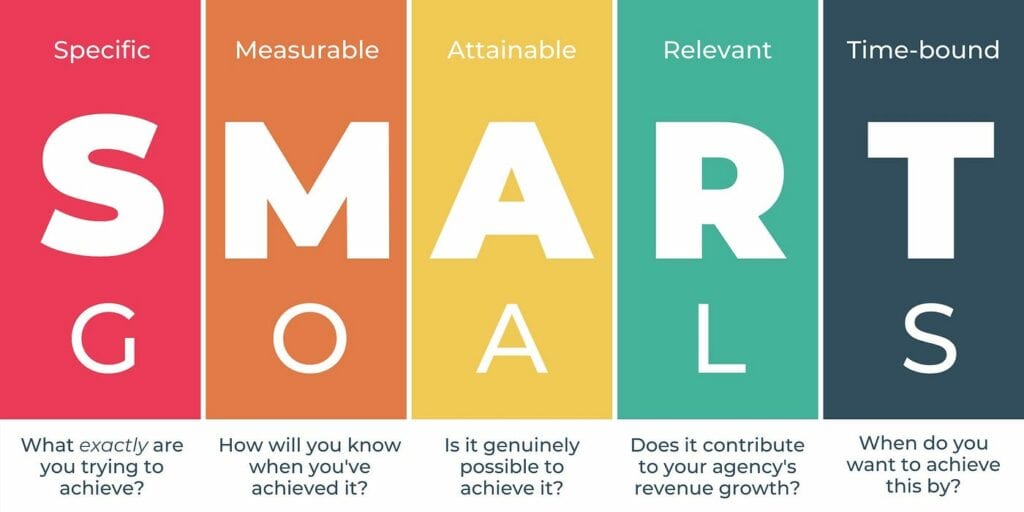Email List Building

Introduction to Email List Building
Email list building is a crucial aspect of any successful digital marketing strategy. It involves the process of collecting email addresses from individuals who have expressed interest in your brand, products, or services. By building a targeted email list, you can effectively communicate with your audience, nurture leads, and drive conversions.
In this comprehensive guide, we’ll dive deep into the world of email list building. We’ll explore the various strategies and techniques you can employ to grow your email list, optimise your signup forms, create compelling content, and measure your success. Whether you’re a seasoned marketer or just starting out, this guide will provide you with the knowledge and tools necessary to build a thriving email list.
What is Email List Building?
Email list building is the practice of gathering email addresses from potential customers or subscribers who have given you permission to contact them. This permission-based approach is essential, as it ensures that you’re communicating with individuals who are genuinely interested in hearing from you.
The process of email list building typically involves the following steps:
- Creating valuable content or offers that entice people to subscribe
- Designing and placing signup forms on your website or landing pages
- Encouraging visitors to provide their email addresses in exchange for the content or offer
- Storing and managing the collected email addresses in an email marketing platform
- Engaging with subscribers through regular email communications
By building a quality email list, you can establish a direct line of communication with your target audience, nurture relationships, and ultimately drive more sales and revenue for your business.
Why Email Lists are Crucial for Marketing Success
Email lists are one of the most valuable assets for any business. Here’s why:
- Direct communication: Unlike social media or other marketing channels, email lets you communicate directly with your subscribers. You can personalise your messages and ensure they land in your subscribers’ inboxes.
- Cost-effective: Email marketing is one of the most cost-effective ways to reach your audience. It’s far less expensive than traditional advertising methods, such as print or television ads.
- High ROI: According to a Data & Marketing Association study, email marketing has an average ROI of £42 for every £1 spent, making it one of the most profitable marketing channels available.
- Targeted messaging: With email lists, you can segment your audience based on various criteria, such as demographics, interests, or behaviour. This allows you to send targeted messages that resonate with specific groups, increasing engagement and conversions.
- Measurable results: Email marketing platforms provide detailed analytics, allowing you to track open rates, click-through rates, and conversions. This data helps you optimise your campaigns and make data-driven decisions.
Building a solid email list is the foundation of a successful email marketing strategy. By focusing on growing your list and engaging with your subscribers, you can unlock the full potential of email marketing and drive significant results for your business.
Preparing for Email List Building
Laying a solid foundation is essential before you start growing your email list. This involves defining your target audience and setting clear goals for your email marketing efforts.
Defining Your Target Audience
To build an effective email list, you must deeply understand your target audience. Ask yourself the following questions:
- Who are your ideal customers or subscribers?
- What are their demographics (age, gender, location, etc.)?
- What are their interests, pain points, and challenges?
- How can your products or services help them?
Creating a detailed buyer persona allows you to tailor your email content and offers to resonate with your target audience. This personalisation will help you attract the right subscribers and increase engagement.
Setting Clear Goals for Your Email List
Having clear goals is crucial for the success of your email list-building efforts. Some common goals include:
- Increasing brand awareness
- Generating leads
- Nurturing prospects
- Driving sales
- Improving customer retention
Once you’ve defined your goals, make sure they are SMART:

*courtesy of How Setting SMART Goals is Beneficial for Your Business
- Specific: Clearly define what you want to achieve
- Measurable: Set metrics to track your progress
- Achievable: Ensure your goals are realistic given your resources
- Relevant: Align your goals with your overall business objectives
- Time-bound: Set a deadline for achieving your goals
By setting SMART goals, you can create a focused and effective email list-building strategy that drives meaningful results for your business.
Strategies to Grow Your Email List
Now that you’ve laid the groundwork, it’s time to start growing your email list. Here are some proven strategies to attract subscribers:
Creating Effective Lead Magnets
A lead magnet is a valuable piece of content or offer that entices people to subscribe to your email list. Some popular lead magnet ideas include:
- Ebooks or whitepapers
- Checklists or cheat sheets
- Templates or tools
- Free trials or samples
- Exclusive discounts or coupons
To create an effective lead magnet, ensure that it:
- Solves a specific problem or addresses a pain point for your target audience
- Provides immediate value and is easy to consume
- Is relevant to your products or services
- Is visually appealing and professionally designed
Utilising Pop-up Forms and CTAs
Pop-up forms and calls-to-action (CTAs) are powerful tools for capturing email addresses. When implementing these elements on your website, keep the following tips in mind:
- Use eye-catching designs and compelling copy
- Offer a clear value proposition
- Keep forms short and simple
- Test different placements and trigger settings
- Ensure mobile-friendliness
Example of a pop-up form:
| Subscribe to Our Newsletter |
|---|
| Get exclusive insights, tips, and offers delivered straight to your inbox. |
| [Email Address] |
| [Subscribe Now] |
Leveraging Social Media Platforms
Social media platforms provide an excellent opportunity to promote your email list and attract subscribers. Here are some strategies to try:
- Add signup links to your social media bios
- Share teasers of your lead magnets
- Run social media contests or giveaways
- Engage with your followers and encourage them to subscribe
- Utilise paid social media advertising to target your ideal audience
By leveraging the power of social media, you can expand your reach and drive more signups for your email list.
Hosting Webinars and Online Events
Webinars and online events are excellent lead-generation tools to help you quickly grow your email list. By providing valuable content and exclusive access to industry experts, you can attract a highly engaged audience and convert them into subscribers.
To host a successful webinar or online event:
- Choose a relevant and compelling topic
- Select a knowledgeable and engaging speaker
- Promote your event across multiple channels
- Provide a seamless registration process
- Follow up with attendees and offer additional resources
Delivering value and building relationships through webinars and online events can significantly boost your email list growth.
Partnering with Influencers and Other Businesses
Partnering with influencers and other businesses in your industry can help you tap into new audiences and grow your email list. Here are some partnership ideas to consider:
- Co-create content or lead magnets
- Cross-promote each other’s email lists
- Host joint webinars or events
- Offer bundled promotions or discounts
When selecting partners, look for individuals or businesses that share your target audience and values. By leveraging the power of partnerships, you can expand your reach and attract new subscribers to your email list.
Optimising Your Signup Forms
The design and placement of your signup forms can significantly impact your email list growth. Here are some best practices to optimise your forms:
Placement and Timing of Signup Forms
- Place forms in prominent locations, such as your header, footer, and sidebar
- Use exit-intent pop-ups to capture visitors before they leave your site
- Experiment with different timing settings, such as time-based or scroll-based triggers
Personalisation and Customisation Tips
- Use compelling headlines and copy that resonate with your target audience
- Customise your forms to match your brand’s visual identity
- Offer relevant incentives or lead magnets
- Address common objections or concerns
Mobile Optimisation
With more than half of all web traffic coming from mobile devices, ensuring your signup forms are mobile-friendly is crucial. Here are some tips:
- Use a responsive design that adapts to different screen sizes
- Ensure forms are easy to fill out on small screens
- Minimise the number of form fields
- Use large, touch-friendly buttons
By optimising your signup forms for placement, personalisation, and mobile-friendliness, you can significantly improve your email list growth and user experience.
Creating Compelling Email Content
Once you’ve grown your email list, engaging your subscribers with compelling content is essential. Here are some tips for creating effective email content:
Crafting Effective Subject Lines
Your subject line is the first thing subscribers see in their inbox. To increase open rates, craft subject lines that are:
- Clear and concise
- Relevant to your audience
- Compelling and curiosity-inducing
- Personalised when possible
Examples of effective subject lines:
- “5 Secrets to [Achieve Desired Result]”
- “[Name], Your Exclusive Offer Awaits!”
- “Last Chance: [Offer] Ends Tonight!”
Personalising Content for Your Audience
Personalisation goes beyond just using your subscriber’s name. To create truly personalised content:
- Segment your email list based on interests, behaviour, or demographics
- Tailor your messaging and offers to each segment
- Use dynamic content that adapts to individual subscribers
- Leverage data and insights to improve personalisation over time
By delivering personalised content that resonates with your subscribers, you can build stronger relationships and drive better results from your email campaigns.
Optimising Emails for Mobile Devices
Optimising your emails for small screens is important with a significant portion of emails being opened on mobile devices. Here are some best practices:
- Use a responsive email template that adapts to different screen sizes
- Keep your email design simple and clutter-free
- Use large, easy-to-read fonts
- Ensure buttons and links are touch-friendly
- Optimize images for faster loading times
Creating mobile-friendly emails can improve the user experience and increase engagement rates across all devices.
Maintaining and Cleaning Your Email List
A healthy email list is essential for the success of your email marketing efforts. Here are some strategies for maintaining and cleaning your list:
Importance of List Segmentation
List segmentation involves dividing your email list into smaller groups based on specific criteria, such as:
- Demographics (age, gender, location, etc.)
- Interests or preferences
- Purchase history or behaviour
- Engagement levels (opens, clicks, etc.)
By segmenting your list, you can send more targeted and relevant content to each group, leading to higher engagement and conversion rates.
Regularly Updating and Cleaning Your List
Over time, your email list can become cluttered with inactive or invalid email addresses. To maintain a clean list:
- Remove bounced or invalid email addresses
- Identify and remove inactive subscribers
- Encourage subscribers to update their preferences
- Perform regular list hygiene checks
Regularly cleaning your email list can improve deliverability, engagement, and overall email performance.
Managing Unsubscribes Effectively
While it’s never pleasant to see subscribers leave your list, managing unsubscribes effectively is essential. Here are some tips:
- Make the unsubscribe process clear and easy
- Offer alternative options, such as reduced frequency or different content preferences
- Seek feedback to understand why subscribers are leaving
- Analyze unsubscribe trends to identify potential issues
By managing unsubscribes effectively, you can maintain a healthy and engaged email list while respecting your subscribers’ preferences.
Tools and Resources for Email List Building
To streamline your email list-building efforts, consider leveraging the following tools and resources:
Recommended Email Marketing Platforms
- Nimbl
- Mailchimp
- Constant Contact
- AWeber
- GetResponse
- ConvertKit
These platforms offer a range of features, such as email automation, list segmentation, and analytics, to help you manage and grow your email list effectively.
Comparison of Popular Email Marketing Tools
| Platform | Pricing | Key Features |
|---|---|---|
| Mailchimp | Free plan available; paid plans start at $9.99/month | User-friendly interface, wide range of templates, robust automation |
| Constant Contact | Paid plans start at $20/month | Easy-to-use drag-and-drop editor, built-in CRM, e-commerce integrations |
| AWeber | Free plan available; paid plans start at $19/month | Powerful automation, wide range of integrations, 24/7 customer support |
Plugins and Software for Capturing Emails
- Nimbl
- OptinMonster
- Thrive Leads
- Sumo
- HelloBar
- Leadpages
These tools can help you create high-converting signup forms, pop-ups, and landing pages to capture email addresses and grow your list.
Real Case Study: Successful Email List-Building Campaign
Company Background and Challenges
Company: Birchbox
Industry: Beauty Subscription Service
Background: Birchbox is a beauty subscription service that delivers personalized samples of beauty products to subscribers each month. Founded in 2010, the company quickly grew in popularity by offering consumers a way to discover new products without committing to full-sized purchases.
Challenges:
- Low Awareness and Engagement: Despite its innovative model, Birchbox faced challenges in effectively raising awareness and engaging potential customers.
- High Competition: The beauty industry is highly competitive, with numerous brands vying for consumer attention and loyalty.
- Need for Rapid List Growth: To fuel its growth, Birchbox needed a robust email list to market its subscription service and convert leads into paying customers.
Strategies Implemented
Pop-up Forms and Lead Magnets:
- Birchbox implemented strategically timed pop-up forms on their website, offering visitors a discount on their first box in exchange for their email address.
- They created compelling lead magnets, such as free beauty guides and exclusive access to special promotions, to entice visitors to subscribe.
Social Media Integration:
- Birchbox leveraged its social media channels to drive traffic to its email sign-up forms. They used targeted ads on Facebook and Instagram to reach a broader audience and encourage sign-ups.
- They also ran social media contests and giveaways that required participants to enter their email addresses to participate.
Partnerships and Collaborations:
- Birchbox partnered with beauty influencers and brands to co-host events and webinars, promoting these collaborations through email campaigns and social media to attract new subscribers.
- Exclusive offers and discounts were provided to the followers of these influencers, further encouraging sign-ups.
Content Marketing:
- High-quality, engaging content was produced and shared across their blog and social media channels. Blog posts included beauty tips, tutorials, and product reviews, with embedded calls-to-action (CTAs) encouraging readers to subscribe to the Birchbox newsletter for more content and exclusive offers.
- Personalized CTAs were used on different landing pages to increase relevance and conversion rates.
Results and Key Takeaways
Results:
- Significant Growth in Email List: Birchbox saw a substantial increase in its email subscriber base, quickly adding tens of thousands of new subscribers.
- Increased Engagement: The targeted and personalized approach led to higher engagement rates, with more subscribers opening and interacting with the emails.
- Improved Conversion Rates: The email list quality improved, leading to higher conversion rates from leads to paying customers.
Key Takeaways:
- Effective Use of Pop-ups: Strategically timed pop-up forms can significantly boost email sign-ups without negatively impacting user experience.
- Leveraging Social Media: Integrating email sign-up efforts with social media campaigns can expand reach and attract a diverse audience.
- Partnership Power: Collaborating with influencers and other brands can provide credibility and access to new potential customers.
- Content is King: Providing valuable content through various channels can engage potential subscribers and encourage them to join the email list.
- Personalization Matters: Tailoring CTAs and email content to subscribers’ specific interests and behaviours can improve engagement and conversion rates.
These strategies showcase how a multi-faceted approach can overcome challenges and drive significant growth in email list building.
Measuring Success
To gauge the effectiveness of your email list building efforts and make data-driven decisions, it’s essential to track the following key metrics:
Key Metrics to Track
- List growth rate: The rate at which your email list is growing over time
- Signup form conversion rate: The percentage of website visitors who complete your signup forms
- Open rate: The percentage of subscribers who open your emails
- Click-through rate (CTR): The percentage of subscribers who click on links within your emails
- Unsubscribe rate: The percentage of subscribers who opt-out of your email list
By regularly monitoring these metrics, you can identify areas for improvement and optimize your email list building strategies accordingly.
A/B Testing Your Campaigns
A/B testing involves comparing two versions of a campaign element (such as a subject line, call-to-action, or layout) to determine which performs better. To conduct effective A/B tests:
- Identify a specific element to test
- Create two variations of that element
- Send each variation to a portion of your list
- Measure the results and determine the winner
- Implement the winning variation for future campaigns
By continuously A/B testing and refining your email campaigns, you can improve engagement, conversions, and overall email performance.
Legal Considerations
When building and managing your email list, you must comply with legal regulations to avoid penalties and maintain trust with your subscribers.
Understanding GDPR and Other Email Regulations
The General Data Protection Regulation (GDPR) is a European Union law that sets guidelines for collecting and processing personal data, including email addresses. Other countries have similar regulations, such as the CAN-SPAM Act in the United States and the Protection of Personal Information Act (POPI) in South Africa.
To comply with these regulations, you must:
- Obtain explicit consent from individuals before adding them to your email list
- Provide clear information about how you will use their data
- Give subscribers an easy way to unsubscribe from your list
- Include your company’s physical address in every email
- Honour unsubscribe requests promptly
POPI Compliance for South African Businesses
The Protection of Personal Information Act (POPI) is a South African law that regulates the processing of personal information, including email addresses. To comply with POPI, South African businesses must:
- Obtain consent from individuals before collecting, using, or storing their personal information
- Only collect and use personal information for specific, explicitly defined, and lawful purposes
- Ensure that personal information is accurate, up-to-date, and not kept for longer than necessary
- Implement appropriate security measures to protect personal information from unauthorized access, loss, or damage
- Allow individuals to access and correct their personal information
- Appoint an Information Officer to ensure compliance with POPI
By adhering to POPI regulations, South African businesses can build trust with their subscribers and avoid legal consequences.
Implementing Double Opt-In Processes
A double opt-in process is an effective way to ensure that you have valid consent from subscribers and maintain a clean, engaged email list. Here’s how it works:
- A visitor completes your signup form and submits their email address
- You send a confirmation email to the provided email address
- The visitor must click a link within the confirmation email to verify their consent
- Only after confirming their consent is the visitor added to your active email list
Implementing a double opt-in process can help you:
- Comply with legal regulations
- Reduce fake or invalid email addresses
- Improve email deliverability
- Ensure that subscribers are genuinely interested in your content
While a double opt-in process may result in a slightly slower list growth rate, it ultimately leads to a higher-quality, more engaged email list.
FAQ Section
What are the best free tools for email list building?
Some popular free tools for email list building include:
- Mailchimp: Offers a free plan for up to 2,000 contacts and 10,000 sends per month
- HubSpot: Provides a free email marketing tool with basic features and limited sends
- Sender: Offers a free plan for up to 2,500 subscribers and 15,000 emails per month
- Benchmark Email: Provides a free plan for up to 250 contacts and 3,500 sends per month
While these free tools can be a great starting point, they often have limited features and sending allowances compared to paid plans.
How often should I clean my email list?
The frequency of cleaning your email list depends on factors such as list size, email frequency, and engagement rates. As a general rule of thumb, consider cleaning your list every 6 to 12 months.
Signs that it’s time to clean your list include:
- Decreasing open and click-through rates
- Increasing bounce rates or unsubscribes
- Receiving spam complaints
By regularly cleaning your list and removing inactive or invalid email addresses, you can maintain a healthy, engaged subscriber base.
What are some common mistakes to avoid?
To ensure the success of your email list-building efforts, avoid these common mistakes:
- Buying email lists: Purchased lists often contain invalid or uninterested email addresses, leading to high bounce rates and spam complaints.
- Failing to provide value: If your emails don’t offer relevant, valuable content to your subscribers, they’re likely to disengage or unsubscribe.
- Neglecting list hygiene: Failing to clean and maintain your list regularly can lead to poor deliverability and damage your sender’s reputation.
- Ignoring legal regulations: Non-compliance with GDPR and other email regulations can result in hefty fines and legal consequences.
- Overwhelming subscribers: Sending too many emails or irrelevant content can lead to unsubscribes and decreased engagement.
You can build a thriving, engaged email list by avoiding these common pitfalls and focusing on providing value to your subscribers.
Quiz Section
Test your knowledge of email list building with this quick quiz:
- What is the primary benefit of segmenting your email list?
a) Increased email frequency b) Improved email deliverability c) More targeted and relevant content d) Faster list growth - Which of the following is NOT a requirement under GDPR?
a) Obtaining explicit consent from subscribers b) Providing an easy way to unsubscribe c) Sending a monthly newsletter to all subscribers d) Including your company’s physical address in emails - What is a lead magnet?
a) A type of email template b) A tool for cleaning your email list c) A valuable resource offered in exchange for an email address d) An email deliverability metric - True or False: A/B testing can help improve email open rates and click-through rates.
(Answers: 1. c, 2. c, 3. c, 4. True)
You can continually improve your strategies and achieve better results by testing your knowledge and staying informed about email list-building best practices.
Conclusion
Building a successful email list is crucial to any effective digital marketing strategy. By understanding your target audience, implementing proven list growth strategies, and continually optimizing your efforts, you can grow a valuable asset that drives long-term business success.
Remember to prioritize quality over quantity, focus on providing value to your subscribers, and always stay compliant with legal regulations. With dedication and a strategic approach, you can unlock the full potential of email marketing and achieve your business goals.


